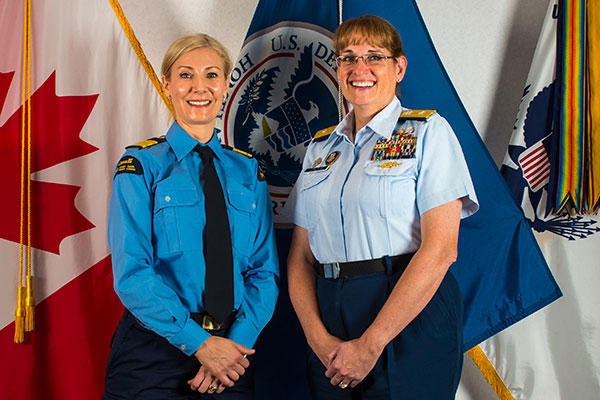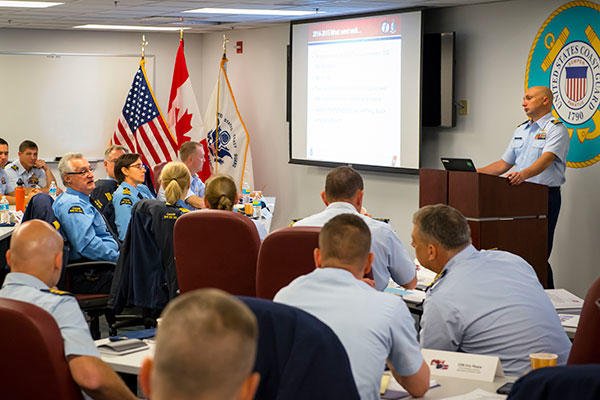CLEVELAND — The U.S. and Canadian Coast Guards along with other federal and industry representatives met at the Anthony J. Celebrezze Federal Building in Cleveland Tuesday and Wednesday for the 2015 Great Lakes International Icebreaking Meeting.
The meeting was held to review the previous ice season and lessons learned, and to share the status of forces, new policies and guidance for the upcoming 2015-2016 icebreaking season.
The Great Lakes icebreaking season is divided into two separate operations conducted via international cooperation and close coordination between U.S. and Canadian crews to tackle extreme ice conditions across the Great Lakes.
Coast Guard Sector Sault Ste. Marie, Michigan, plans and runs Operation Taconite, an ice breaking operation facilitating the flow of commerce across Lakes Superior and Michigan, the northern half of Lake Huron, the St. Marys River and the Straits of Mackinac.
The 2014-2015 operation spanned 122 days, utilized seven U.S. Coast Guard and three Canadian Coast Guard icebreakers, devoted more than 3,000 hours breaking ice for convoys and assisted in 677 commercial vessel transits to move an estimated 23.7 million tons of dry bulk and liquid cargoes with an estimated value of $829 million.
These crucial commodities sustain industrial production and power generation for the Great Lakes region during the winter months. Icebreakers provided direct assistance for 353 of the transits.
An additional 3,658 hours of icebreaking established and maintained tracks through the ice-choked waterways of Georgian Bay, Straits of Mackinac, Green Bay, southern Lake Michigan, St. Marys River, and across Lake Superior.
Coast Guard Sector Detroit coordinates Operation Coal Shovel, an ice breaking operation facilitating the flow of commerce across southern Lake Huron, Lake St. Clair, the St. Clair and Detroit River systems, Lake Erie and Lake Ontario. It commenced January 9, 2015, and concluded April 17, 2015.
Operation Coal Shovel spanned 100 consecutive days and included 2,430 hours of U.S. icebreaking. During the season, Operation Coal Shovel facilitated 153 vessel transits that moved a total 29 million tons of cargo worth more than $2 billion. Coast Guard icebreakers also provided emergency flood mitigation for five communities.




























